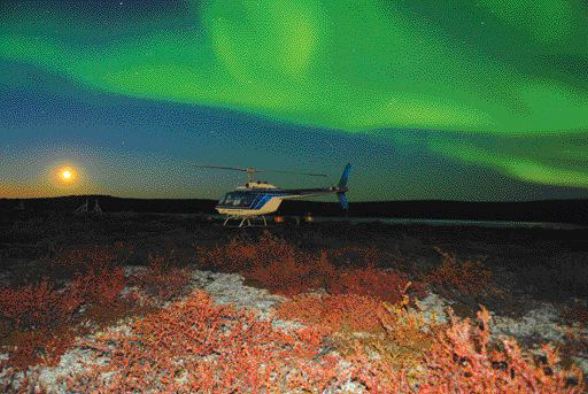With a fresh infusion of cash into the treasury, GGL Diamond (GGL-V, GGDMF-O) is beginning a new season of exploration in the Northwest Territories, hoping to find more evidence of potentially economic nickel deposits in the Winter Lake area.
GGL is currently planning an extensive airborne geophysical survey over the area, followed by more ground work and, finally, drilling later in the year. President and CEO Raymond Hrkac, an industry veteran who founded GGL in 1981, says he hasn’t felt so excited about a project in a long time.
Investors have had a harder time maintaining their enthusiasm. When GGL first announced the discovery of 0.41% nickel in a grab sample last April, the stock soared to an intra-day high of $1.50 on a trading volume of 58 million shares. Now — with drilling still at least six months away — the shares are languishing below 25 apiece.
GGL has allocated $2.85 million of a recent $4-million private-placement financing of flow-through shares to the Northwest Territories, mostly to Winter Lake, some to the company’s diamond projects. The remaining $1.16 million will be spent on the McConnell Creek copper-gold prospect in British Columbia.
The reason for Hrkac’s optimism at Winter Lake is an extensive komatiite belt taking shape there that shares geochemical similarities with the famous nickel belts in Australia and northern Canada (Raglan and Thompson). GGL has staked 116 claims along the newly named Providence Greenstone Belt, comprising an area that extends for 120 km from north to south and is 30 km wide on average.
Komatiite-hosted nickel deposits are a special class of ore deposit associated with lava that erupted onto Earth’s surface at extremely high temperatures early in the planet’s history. They occur in Archean greenstone belts in Canada, Australia and Zimbabwe.
At the Kambalda nickel camp in Western Australia and the Raglan camp in northern Quebec, the high temperatures in the komatiite flows reacted with underlying sulphur units. The liquid sulphur then formed blebs in the lava as a massive horizon at the base of the flow and/or disseminated throughout the lava.
Kambalda contained more than 10 million tonnes of reserves grading 3% nickel in 2000 while the Raglan mine contained reserves of 15 million tonnes grading 2.8% nickel at the end of 2005.
The nickel grades uncovered at Winter Lake have so far been subeconomic. The discovery sample returned 0.41% sulphide nickel, plus copper and cobalt values. Subsequent samples have returned anomalous nickel values of between 800 and 4,600 parts per million.
But Hrkac says the komatiites in the Winter Lake area are a lot more extensive than originally thought and there is still a lot of ground to cover. Instead of just one band of komatiites, there are at least three and possibly four or five spreading across the property, he says. Sulphide-rich areas contain an encouraging mix of pyrrhotite with minor pyrite and chalcopyrite, combined with iron formation typical of the Thompson belt.
The komatiites respond well to airborne magnetics. Strong magnetic responses coupled with, or adjacent to, strong EM responses hint at buried sulphide zones.
“We’re beginning to identify centres of the flows that would be target areas for nickel,” Hrkac says.
He says the next step is to run another airborne geophysical survey to look a little deeper into the bedrock, cover areas that have not been flown before, and better define targets in preparation for drilling late in the summer.
The 2007 summer field season also detected the potential for volcanogenic massive sulphide mineralization, with grab samples assaying up to 1.3% zinc and 0.5% copper over a strike length of 15 km in the central portion of the claims, which is mostly covered by overburden and lakes.
At presstime, GGL was awaiting the results of soil and lake sediment sampling to further define the VMS potential of the area and provide the focus for ongoing exploration.
GGL is also planning to spend just over $1 million exploring the 100%-owned McConnell Creek copper-gold property, in British Columbia, which has been investigated on and off since 1947. McConnell Creek has a geological environment with the potential to host both porphyry gold-copper deposits and gold deposits consisting of high-grade shoots within shear zones.
GGL plans to investigate areas of copper and gold mineralization and geophysical and geochemical anomalies that have not yet been tested, including a copper-rich area lying 3 km west of the main gold showing. According to a recently published National Instrument 43-101 report, further exploration should include geochemical surveying, induced-polarization surveys and diamond drilling.
— The author is a freelance writer specializing in mining issues, and principal of Toronto-based GeoPen Communications ( www.geopen.com ).


Be the first to comment on "GGL nickel find points to big-scale potential in NWT"